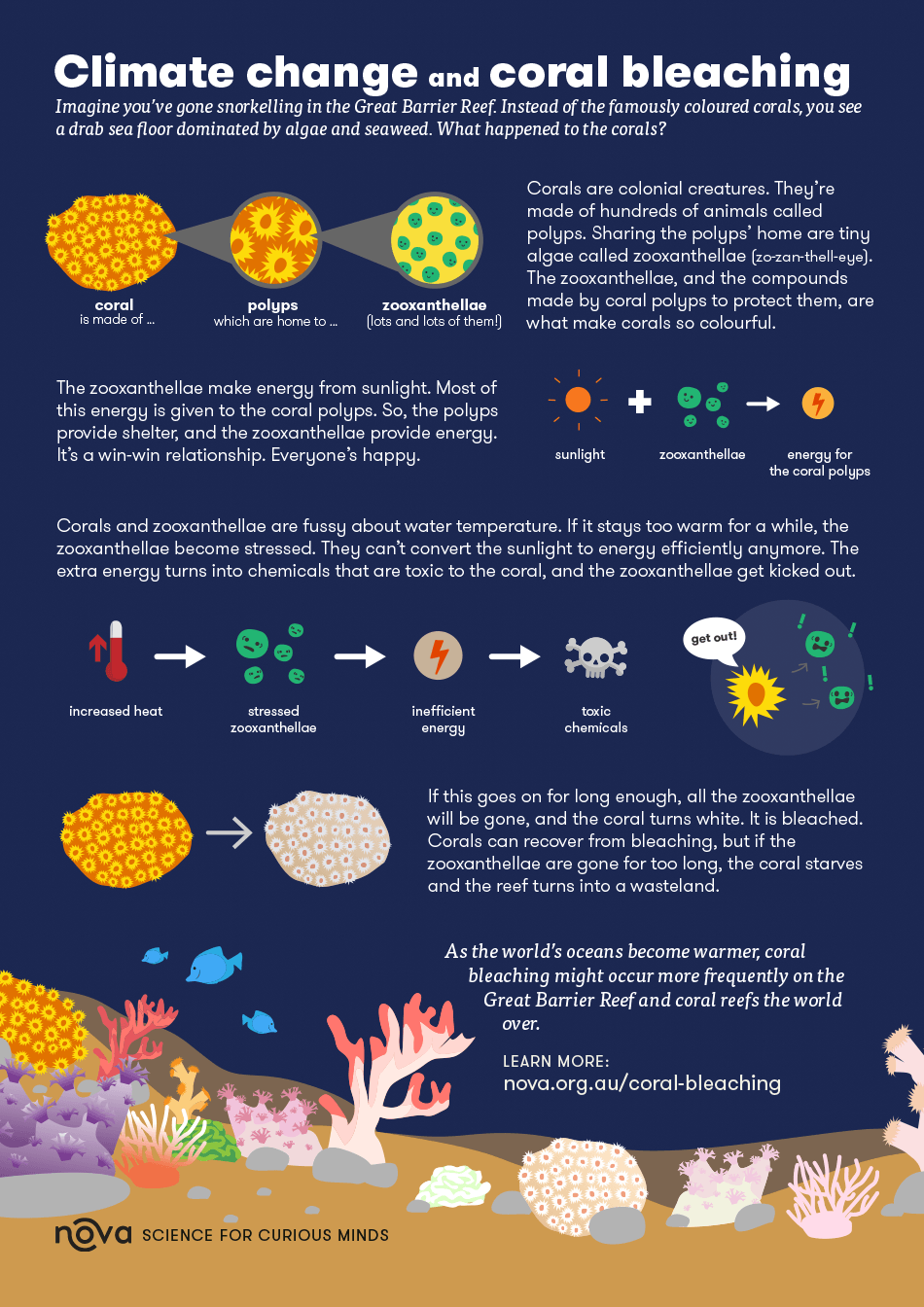- Home
- Infographics
- What is coral bleaching?
What is coral bleaching?
What is happening to corals in the Great Barrier Reef? This infographic explains the process of coral bleaching.
Imagine you’ve gone snorkelling in the Great Barrier Reef. Instead of the famously coloured corals, you see a drab sea floor dominated by algae and seaweed. What happened to the corals?
Corals are colonial creatures. They’re made of hundreds of animals called polyps. Sharing the polyps’ home are tiny algae called zooxanthellae (zo-zan-thell-eye). The zooxanthellae, and the compounds made by coral polyps to protect them, are what make corals so colourful.
Coral is made of polyps, which are home to zooxanthellae (lots and lots of them!)
The zooxanthellae make energy from sunlight. Most of this energy is given to the coral polyps. So, the polyps provide shelter, and the zooxanthellae provide energy. It’s a win-win relationship. Everyone’s happy.
Sunlight + zooxanthellae → energy for the coral polyps
Corals and zooxanthellae are fussy about water temperature. If it stays too warm for a while, the zooxanthellae become stressed. They can’t convert the sunlight to energy efficiently anymore. The extra energy turns into chemicals that are toxic to the coral, and the zooxanthellae get kicked out.
Increased heat → stressed zooxanthellae → inefficient energy → toxic chemicals (then the zooxanthellae get kicked out by the polyps)
If this goes on for long enough, all the zooxanthellae will be gone, and the coral turns white. It is bleached. Corals can recover from bleaching, but if the zooxanthellae are gone for too long, the coral starves and the reef turns into a wasteland.
Colourful coral → bleached coral
As the world’s oceans become warmer, coral bleaching might occur more frequently on the Great Barrier Reef and coral reefs the world over.
Learn more at nova.org.au/coral-bleaching






